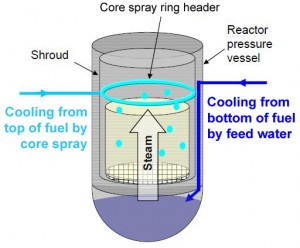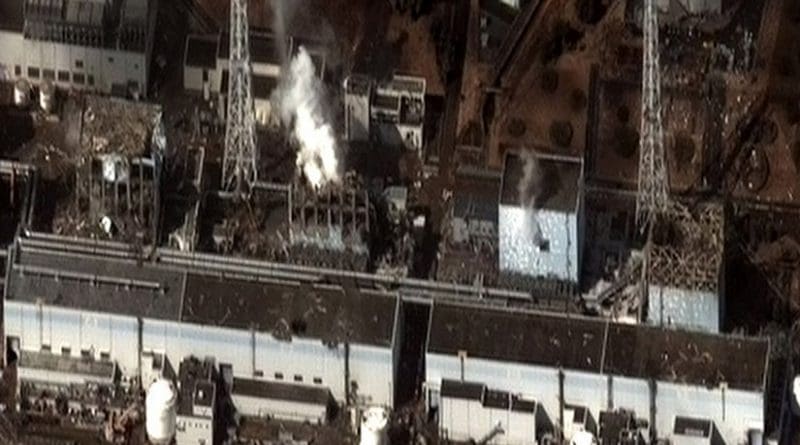Japan: Fukushima Third Nuclear Reactor Temperature Down
The operation of a core spray has helped to bring the temperature of Fukushima Daiichi 3 below 100ºC – the benchmark for cold shutdown.
Tokyo Electric Power Company (Tepco) will continue to monitor the unit closely while evaluating the new cooling setup, but the temperature reported today for the bottom of the reactor vessel was 96.4ºC.
Unit 1 is at 85.6ºC, making unit 2 the only melted core still above the 100ºC bar at 112.9ºC Tuesday.

Until 1 September, the hot reactor internals and remaining parts of unit 3’s core were cooled only by steam rising from a pool of water at the bottom of the reactor vessel. Bringing the core spray back into operation means an additional flow of water droplets is coming down into the core space itself, theoretically giving a step change in cooling efficiency.
Tepco has been monitoring airborne radiation levels to make sure the core spray would not result in radioactive emissions, but reported no detection at all of airborne iodine-131, caesium-134 or caesium-137. While contamination remains on the ground over a wide area, radioactive emissions from the site ceased in July.
The core spray is putting in 3.0 cubic metres per hour while the feedwater line continues at 6.0 cubic metres per hour. The rate of injection via the feedwater line will be gradually reduced to 3 cubic metres per hour while temperature is monitored.
If the dual injection method proves efficient at removing heat from the core, as Tepco expects it to, then both systems could be set at 3 cubic metres per hour. This would mean an overall reduction in the amount of water input of one third, simplifying Tepco’s task of managing the highly radioactive water that has accumulated in the building basements.
This water is being pumped out and taken through a series of treatment lines before storage and re-injection. Over the last month this has caused the level of water in the basement of unit 3’s turbine building to consistently edge down by 1-5 centimetres per day, with some periods of standstill. Nevertheless it still measures over three metres deep.
Researched and written by World Nuclear News

